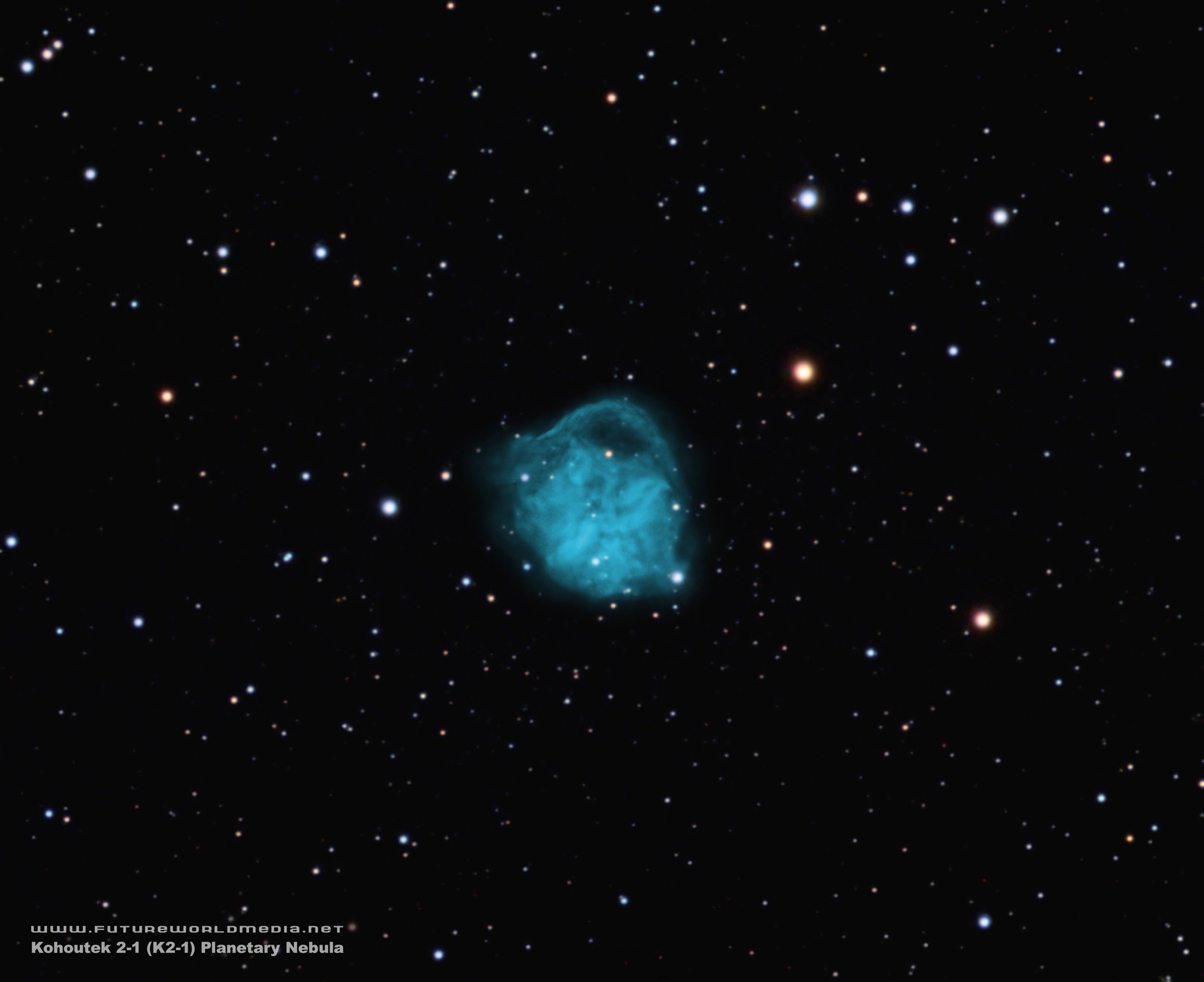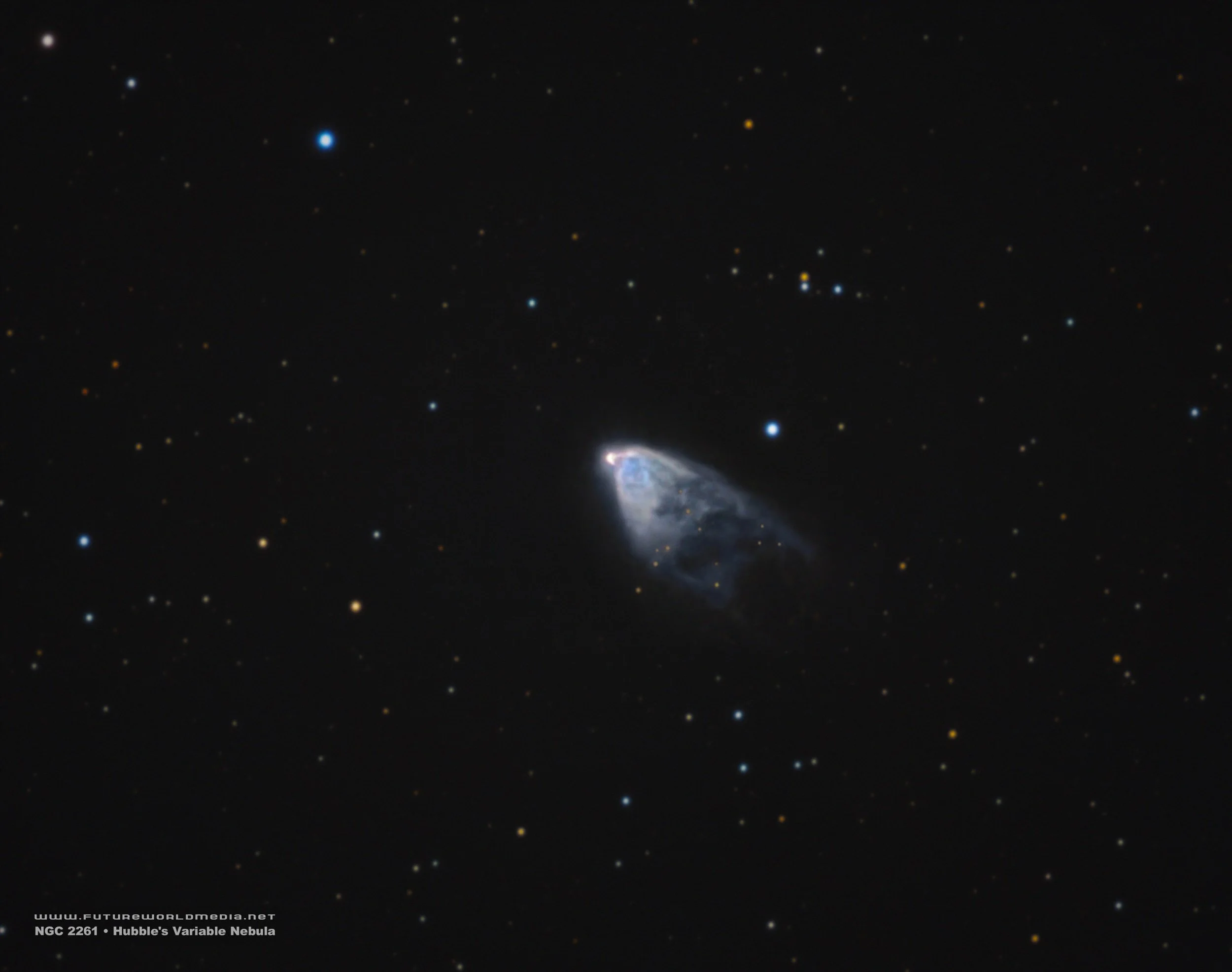
AAPOD2 Image Archives
douglas j struble
Featured Astrophotographer on AAPOD2
Jacoby 1 • Coffee Stain Planetary Nebula
Image Description and Details : This is one of the hardest deep space objects I have ever processed. I was well past diminishing returns in the amount of integration time I captured for my poor bortle 8 skies. I started capturing this April of this year; four months ago. It was even more challenging than the squid nebula; Ou4. While Jacoby 1 has only a designation name, I decided to call it the coffee stain planetary nebula for obvious reasons. Jacoby 1 lies within the Bootes constellation. It was discovered in 1995 by George Jacoby. It's amazing given how faint it is that he was able to discover it in the first place.
Copyright: © Douglas J Struble
Kohoutek 2-1 (K2-1) Planetary Nebula
Image Description and Details : I started capturing this January 9th of this year and just finished capturing last week. It's been a rough winter as usual for capturing and given my light pollution, I had a heck of a time pulling out the detail in the OIII. My friend Peter captured some Ha, but there is not a lot there so I decided given my limited nights of clear skies, I would just hammer the OIII.
In 1963 while examining the POSS plates, Kohoutek came across a number of new nebulae, most of which he was able to identify as planetary nebulae. These were published in the bulletin of the Czech Astronomical Institute Circular in 1963 as BAICz14. However, in the case of some of the objects he discovered he was not able to confirm their type. Over the years this object has been variously catalogued as an irregular galaxy (UGCA 100), a bright nebula (LBN 809) or even a reflection nebula (DG 50). SIMBAD classifies this object as a diffuse nebula with notes saying it is not a galaxy or a planetary nebula. This is somewhat odd as the current professional planetary nebula (HASH) database classifies it as a true planetary nebula. In the discovery paper Kohoutek remarks on a blue star near the centre of the nebula at about 18th mag which could be the central star.
Kohoutek 2-1 is 3700 light years away in the constellation Auriga. It has a size of 115x126 arc sec and is predominantly OIII. It has a mean surface brightness of 24.1 mag/arc sec.
Copyright: © Douglas J Struble
NGC 2261 • Hubble's Variable Nebula
Image Description and Details : This is the first time processing an image in over a couple months. It has been a horrible winter, like I am sure for many out there. This is also the first broadband image I have captured in over a year, as I typically do mostly narrowband given my light pollution. I know it changes in a matter of weeks and probably could of gotten it a bit shaper if I had more clear nights. I also wanted to capture a lot more RGB, but focusing mostly on the detail of the luminance.
The star R Monocerotis has lit up a nearby cloud of gas and dust, but the shape and brightness slowly changes visibly even in small telescopes over weeks and months, and the nebula looks like a small comet.
One explanation proposed for the variability is that dense clouds of dust near R Mon periodically block the illumination from the star. This casts a temporary shadow on the nearby clouds.
Copyright: © Douglas J Struble
Ferrero 6 (Fe 6) Planetary Nebula
Image Description and Details : I have been capturing Ferrero 6 for two months on my second rig. Typically here in Michigan USA, the autumn has the most amount of clear nights out of the year. Subsequently I planned on a deep space object that was very faint and challenging. Unfortunately this autumn was not typical at all with a major amount of cloudy nights and precipitation, like the rest of this past year here. Even with the amount of integration time I piled on, I really had to massage the data pretty hard. Very few have attempted to capture it, so I thought I would give it a try.
Ferrero 6 (Ferrero 6 • Fe6 • PN G129.6+03.4) Planetary Nebula was discovered as part of the IPHAS survey. It's spectroscopically was confirmed as a true planetary nebula by the professional astronomer Laurence Sabin in September 2011. It has also been independently discovered by the French amateur astronomer Laurent Ferrero in 2013. Its structure consists of a low surface brightness bubble with a size of 3.5 arcminutes, which is accentuated by a thin bright rim on the outside. It is very likely to be an ancient evolved planetary nebula that is interacting with the interstellar medium.
Copyright: Copyright: Douglas J Struble





